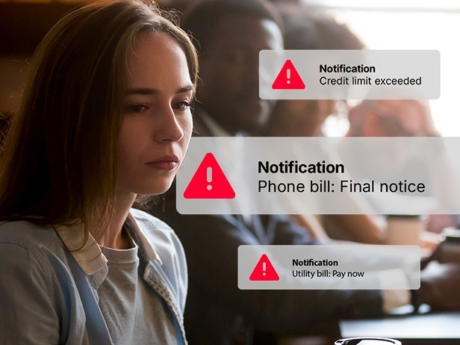What happens if your employer goes bankrupt?
CPA, CIRP, Licensed Insolvency Trustee

CPA, CIRP, Licensed Insolvency Trustee
Work plays a major role in our lives—after all, most full-time employees in Canada spend 40+ hours a week on the job. While your job can be fulfilling, it can also bring stress—especially when uncertainty arises. If your employer is experiencing financial trouble, it’s natural to feel concerned about what that could mean for your future. And if there are whispers of bankruptcy, you're probably not alone in feeling anxious. To help you navigate a challenging situation like this, we’ve answered some of the most common questions about employer bankruptcy.
How do I know if my employer is bankrupt?
Corporate bankruptcies in Canada have seen a significant increase in recent years, particularly in 2023 and early 2024. Despite the increase of headlines, there can be confusion about the difference between insolvency, restructuring, receiverships, and bankruptcy. If a company is:
- Insolvent: they can no longer meet their financial obligations, like regular payments to creditors and employees.
- Restructuring: they are reworking their internal structures to better meet their financial obligations. This could include layoffs.
- Bankrupt: they are no longer viable and must liquidate all assets to repay their outstanding debts.
- In a receivership: a Licensed Insolvency Trustee (LIT) will liquidate the company’s assets on behalf of a secured creditor that is no longer receiving payment.
Unfortunately, employees are often the last to know when their employer is facing financial challenges. If a company files under one of the formal insolvency options you’ll likely be notified by your employer, and you should also receive an information package from the trustee handling your employer’s insolvency proceeding. This package will detail how you can file your “proof of claim” to receive what the company owes you from the remaining assets.
What happens to employees in bankruptcy?
In a bankruptcy, the company will cease operations, and most employees will lose their jobs. Some employees may be maintained for a short period of time to handle the closure process.
Will I receive severance if my employer goes bankrupt?
Once bankruptcy is filed, all assets are part of the company’s estate. This includes money used to pay wages or severance. Employees can file a “proof of claim” to request compensation for unpaid wages, severance, or unused vacation days for their unsecured claim.
With a company that already can’t pay its obligations, it’s possible you won’t receive the full amount owed to you. In this case, you may qualify for the Wage Earner Protection Program (WEPP).
What is the Wage Earner Protection Program (WEPP)?
The Wage Earner Protection Program is a one-time payment offered through the government of Canada to help employees of companies undergoing insolvency proceedings, such as bankruptcy or receivership. If you’re not an officer, director, or manager responsible for financial decisions in the company, you should qualify for WEPP. You can apply to receive a one-time payment of up to 7 times your maximum weekly insurable earnings (maximum of $8,844.22 in 2025) to help compensate for lost wages. For more information on how to apply, visit the Government of Canada website.
Sometimes the WEPP payment isn’t enough. When faced with unemployment, it can be easy to drain savings and accumulate debt quickly. If you find yourself facing your own financial hardship, bankruptcy or consumer proposals can provide debt relief for individuals as well. Book a free consultation to learn more.
About the Author
CPA, CIRP, Licensed Insolvency Trustee
Take the first step to debt freedom
Speak to one of our debt solutions professionals during a free, no-obligation consultation.
Related articles

What Canada’s 2025 federal budget could mean for your taxes—and your wallet

4 common investment scams and how to avoid them

Is AI your new best budget buddy?

Should I get a store credit card?

5 questions to help you plan a debt-free wedding

The rising cost of friendship in Canada

How to rent in Canada with bad credit
Looking for assurance, tax, and business advisory services? Visit Doane Grant Thornton LLP.

Loading